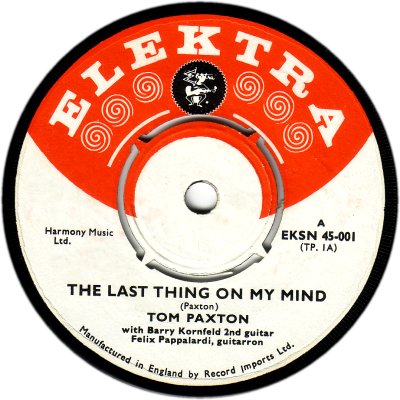
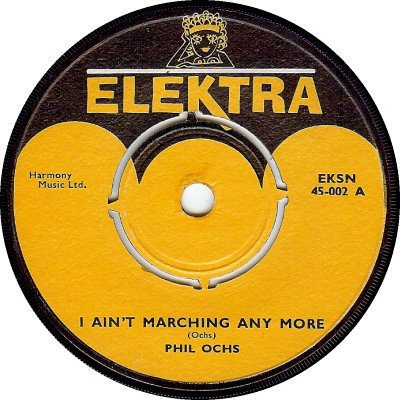
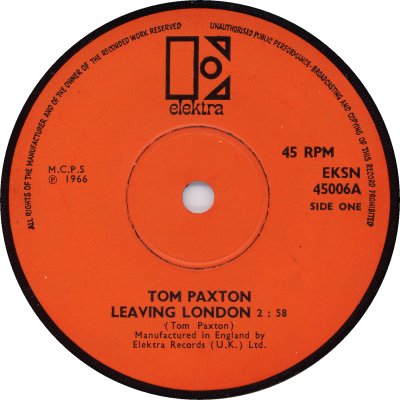
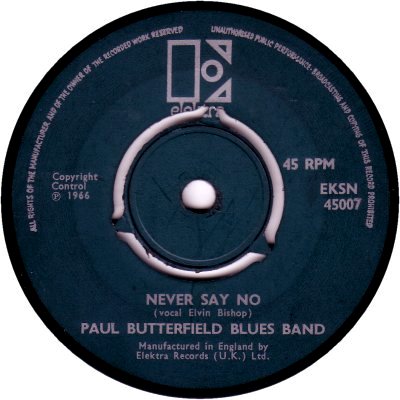

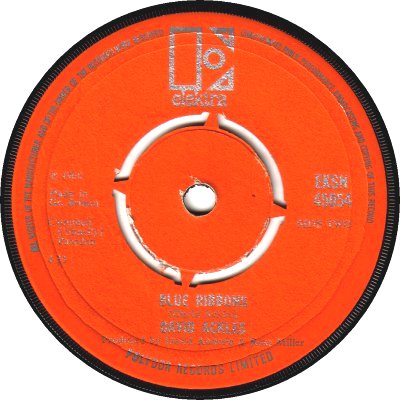
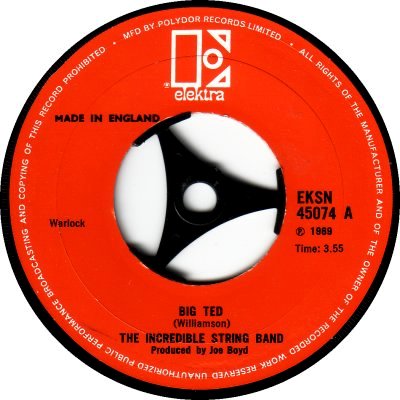


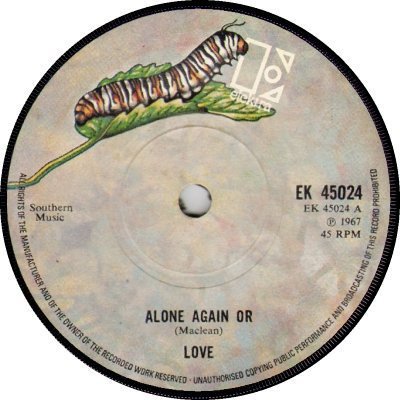
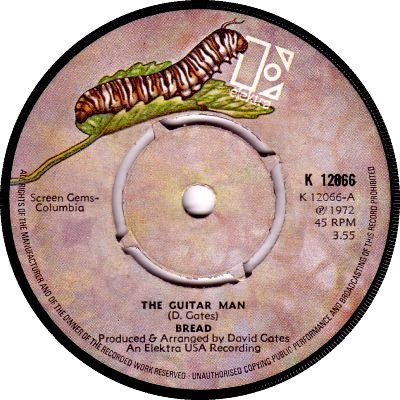
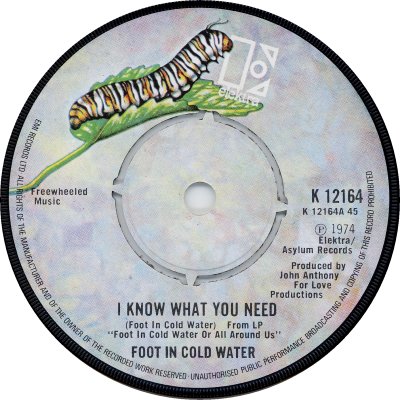

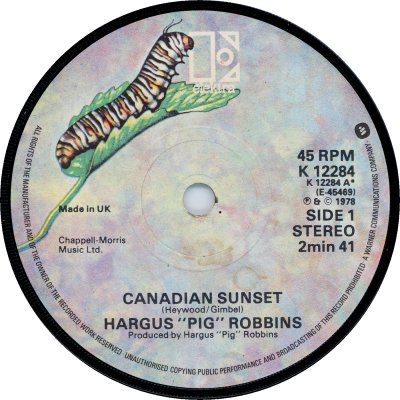


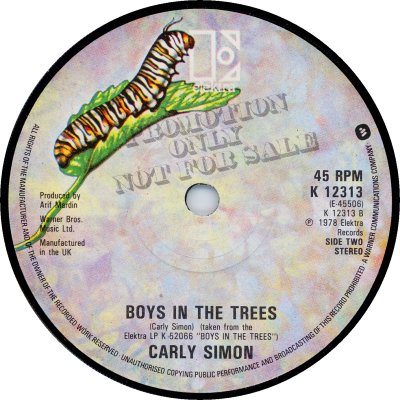
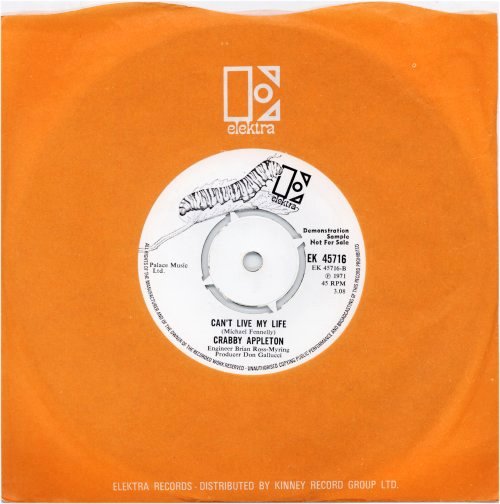
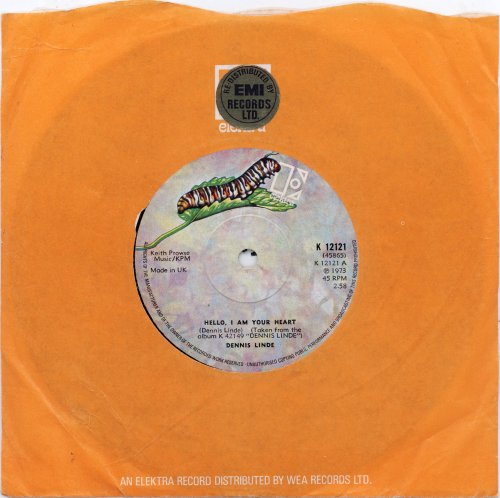
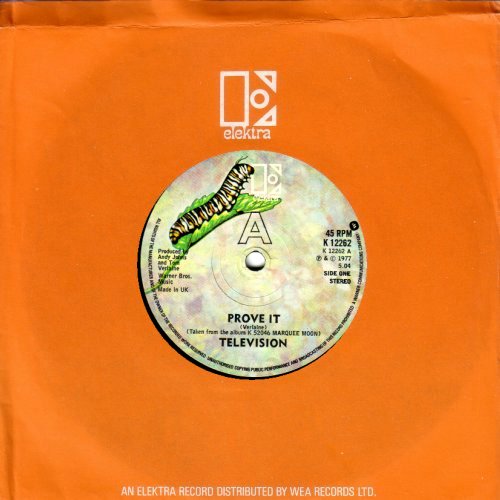


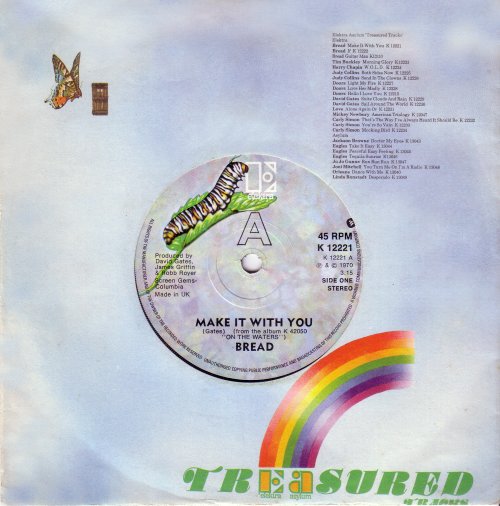
American, out of New York City. The Elektra label was started by Jac Holzman in 1950. At first it concentrated upon the fields of Folk, Ethnic music, Jazz and Gospel; later on it expanded into Blues. Pop and Rock. Judy Collins was an important signing for Elektra, in 1961); other notable signings followed: the mid '60s saw the advent of Love, and the Doors, while Carly Simon arrived in 1970. The Nonesuch offshoot was launched in 1963 as a budget-priced outlet for classical music; it proved surprisingly successful. Elektra was sold to the Kinney Corporation in 1970 and became the 'E' of the big WEA group when Kinney was renamed Warner Communications in 1971. Holzman retired in 1973, but despite the loss of its founder, the label continued to flourish, and artists such as Bread, Television and the Cars kept it in the charts throughout the '70s and early 80s. Elektra was combined with Asylum in August 1973; it is still going today, as part of Time-Warner.
In Britain, the Elektra label came in the scene in 1965. Its first single had a striking red and white label (1) and was pressed by Record Imports Ltd; for the second release, Phil Ochs's, 'I Ain't Marching Any More', the design was changed completely and the colours were altered to yellow and black, though numbering remained in the EKSN45-000s (2) - thanks to Robert Bowes for that scan. For the third and fourth releases the red-and-white label returned. From May 1967 a new, plainer, design was adopted; these labels were either orange with black lettering (3) or green label with silver lettering (4); the numbers dropped the hyphen at this point and became just EKSN-45000. In August of that year Polydor took over manufacture and distribution, and that company's name appeared at the bottom of the label (5). In November 1968 the black printing became silver (6). Around October 1969 the design altered slightly and the colours changed again, this time to red with black and white printing (7). In March / April 1970 Polydor changed to a seven-figure numbering system for all its labels, and Elektra's EKSN-45000s became 2102-000s (8). Some later pressings of Judy Collins's 'Amazing Grace' (2101-010) were injection-moulded (9); Polydor retained the rights to that single in perpetuity after its agreement with Elektra ended ('Music Week', 5th August 1972).
'Record Retailer' of the 14th of November 1970 reported that Elektra was to move from Polydor to either CBS or Pye in the new year; the issue of the 12th of December revealed that the decision had been made and that CBS was to take over distribution while Kinney handled marketing and promotion. After the move Elektra singles were given a new 'caterpillar' label and an EK-45700 numerical series (10) - this scan appears by courtesy of Julian Hardstone. Promos from this period have the same hollow 'A' as Pye promos of the time but haven't got Pye's 'ADVANCE PROMOTION COPY' lettering above it (15). Kinney had plans to set up its own distribution network: a joint venture with Island starting in July 1971 was considered but the idea was abandoned ('Record Retailer', 23rd January 1971). Instead it formed a joint pressing / distribution operation with CBS ('RR', 20th March 1971); the July 1971 starting date remained. According to the 'RR' article the agreement was a three-year one. At the start of the agreement the EK-45700 numbering of Elektra singles was replaced by a K-12000 one, though the label design remained the same (11); the other members of the Kinney group were also given numbers in various K-00000 series. 'RR' of the 3rd of July 1971 stated that Elektra singles which were taken from albums would in future have a montage of tracks from that album on the 'B' side, and that Timber's 'Bring America Back' (K-12022) would be the first to do so; for some reason the notion failed to catch on and as well as being the first single with a montage on it the Timber record also proved to be the last. Atlantic joined the Kinney group in March 1972, and Kinney underwent a corporate name-change to WEA (Warner-Elektra-Atlantic) from the 1st of July 1972 ('RR', 11th March 1972).
A big shake-up of WEA was announced in 'Music Week' of the 23rd of June 1973: as the result of an intiative of its American parent it was to be split into four autonomous companies. Elektra was one of them, and it gained a new head man in David Geffen, of Asylum Records (q.v.). In order to unite the two companies that were under his control Geffen moved Elektra from CBS/WEA to EMI, which handled Asylum at that time; the merger took place, with Nonesuch (q.v.) also joining in, and Elektra-Asylum-Nonesuch Records was formed, with Geffen as chairman ('MW', 15th September 1973). At the time of the move the label gained a reference to EMI Records at the left-hand side of the outer circle of declarations, and perforated copies have the narrower perforations typical of EMI singles (12). Catalogue numbers continued to be in the K-12000s. Promos from this period have the usual EMI-style promo appearance (16).
The licensing agreement with EMI expired in the autumn of 1975 ('MW', 14th June 1975). Geffen agreed a six-month extension in the hope of securing a longer-term deal, but he moved on to become vice-chairman of Warner Bros. pictures before the longer deal could be agreed, and at the end of the six months his replacement, Joe Smith, took Elektra-Asylum to join its WEA stable-mates, which it did in February 1976 ('MW', 17th January). The same 'MW' article said that Elektra-Asylum was to cease to be autonomous and was to be run by a label manager from within WEA's London headquarters. From the 1st of February Elektra and Asylum products began to be manufactured and distributed by CBS, as the other WEA labels were. A small 'W' and the equally miniscule legend 'A Warner Communications Company' appeared on the right hand side of the label at the time of the changeover, and a medium-sized hollow 'A' was placed above the spindle hole (13). This 'A' merely indicated which was the 'A' side, and every so often singles were issued without it (14). Catalogue numbers were unaffected, but the pressing of promotional copies became the exception rather than the rule. When they appeared, which was very rarely, they had the legend 'Promotion Only Not For Sale' on them in a marking that resembled a handstamp (17).
WEA was continuing to think big, and it started its own distribution network, which was fully operational by July 1977. The new network handled all the company's labels, including Elektra, though CBS continued to be responsible for their pressing. The Elektra label design and numbering remained unchanged during the switch, and they were to stay the same for the rest of the '70s; the only developments worthy of note took place in 1979 when singles on the Planet and Asylum labels began sharing Elektra's catalogue numbers, the former in January, the latter in September. In December 1977 WEA acquired Island's pressing plant at West Drayton. Its manufacturing agreement with CBS still had sixteen months to run, so in the meantime the plant could only be used for third-party customers and WEA's own overflow work ('MW', 24th December), but at the end of that period the company was able to start pressing its own records. That said, CBS pressings of WEA records continued to appear until at least the end of 1978.
As far as company sleeves are concerned, Elektra had its own orange one for most of the Seventies. In 1971 and early '72, when Kinney was doing its own distribution in co-operation with CBS, Elektra sleeves referred to Kinney at the bottom (18); after the change of corporate name, in July 1972, the 'Kinney' was replaced by WEA (20). After the change of distributor to EMI, sleeves referring to WEA were initially given gold 'Re-Distributed by EMI Records' stickers (19). Around 1978 WEA adopted a common sleeve for all its labels and Elektra singles began to appear in those (21). The design of the common sleeve changed c.1979 (22). A 'Treasured Tracks' series of Elektra and Asylum singles was issued on the 20th of August 1976, in a special sleeve (23); the actual labels didn't carry any reference to the series's name. The discography below only covers the 1970s, and, as usual, it is peppered with holes. Quite a number of these holes are caused by the records with those numbers only being issued overseas.
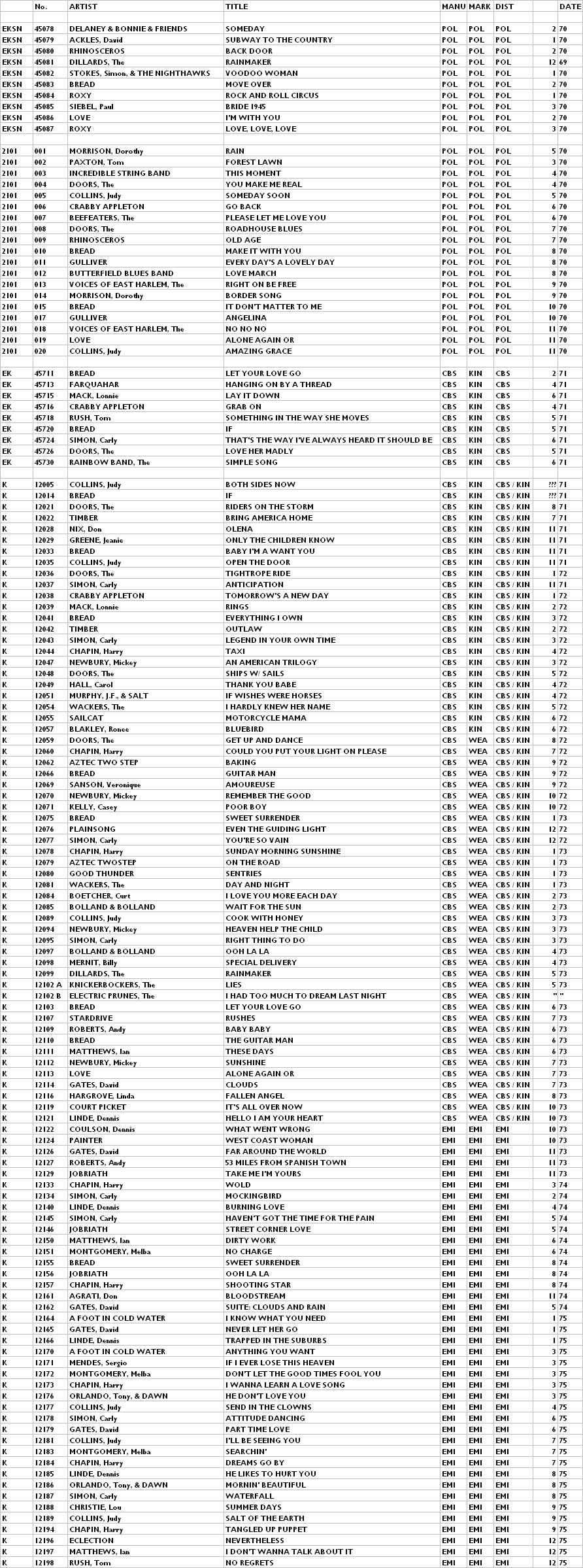
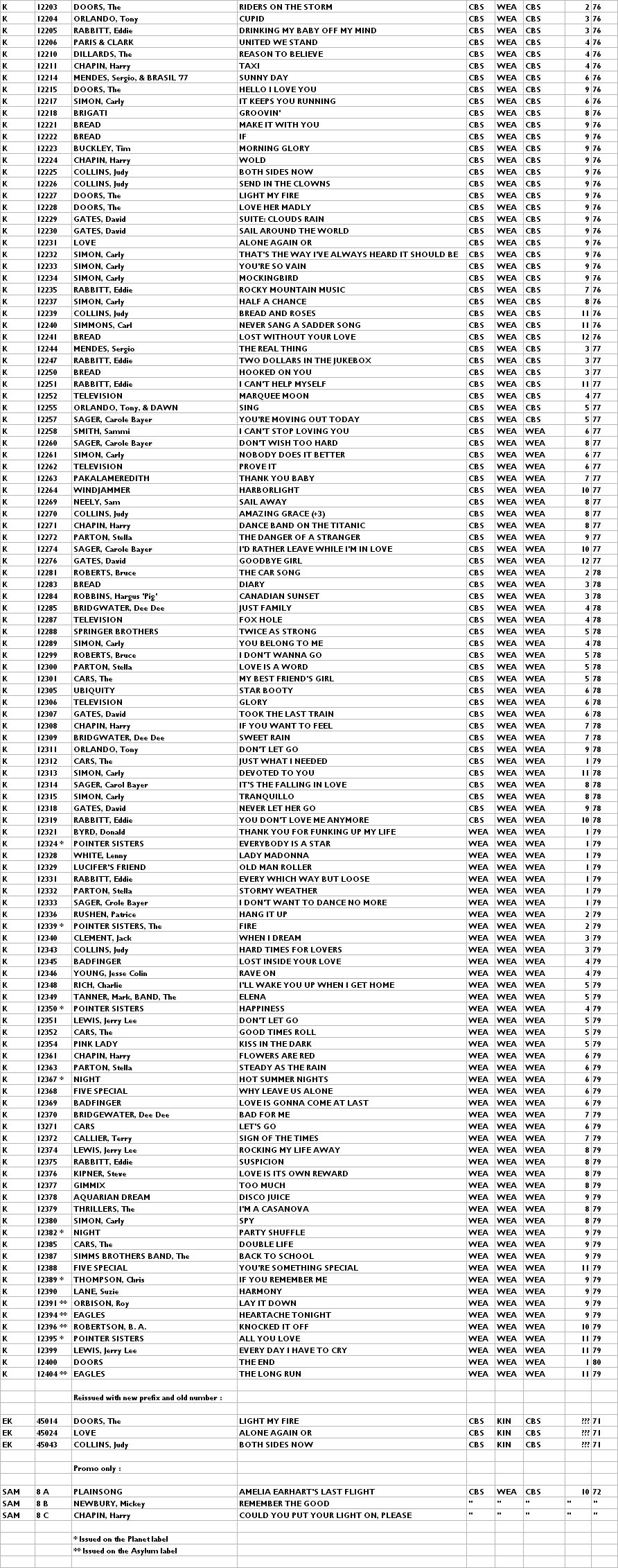


Copyright 2006 Robert Lyons.

